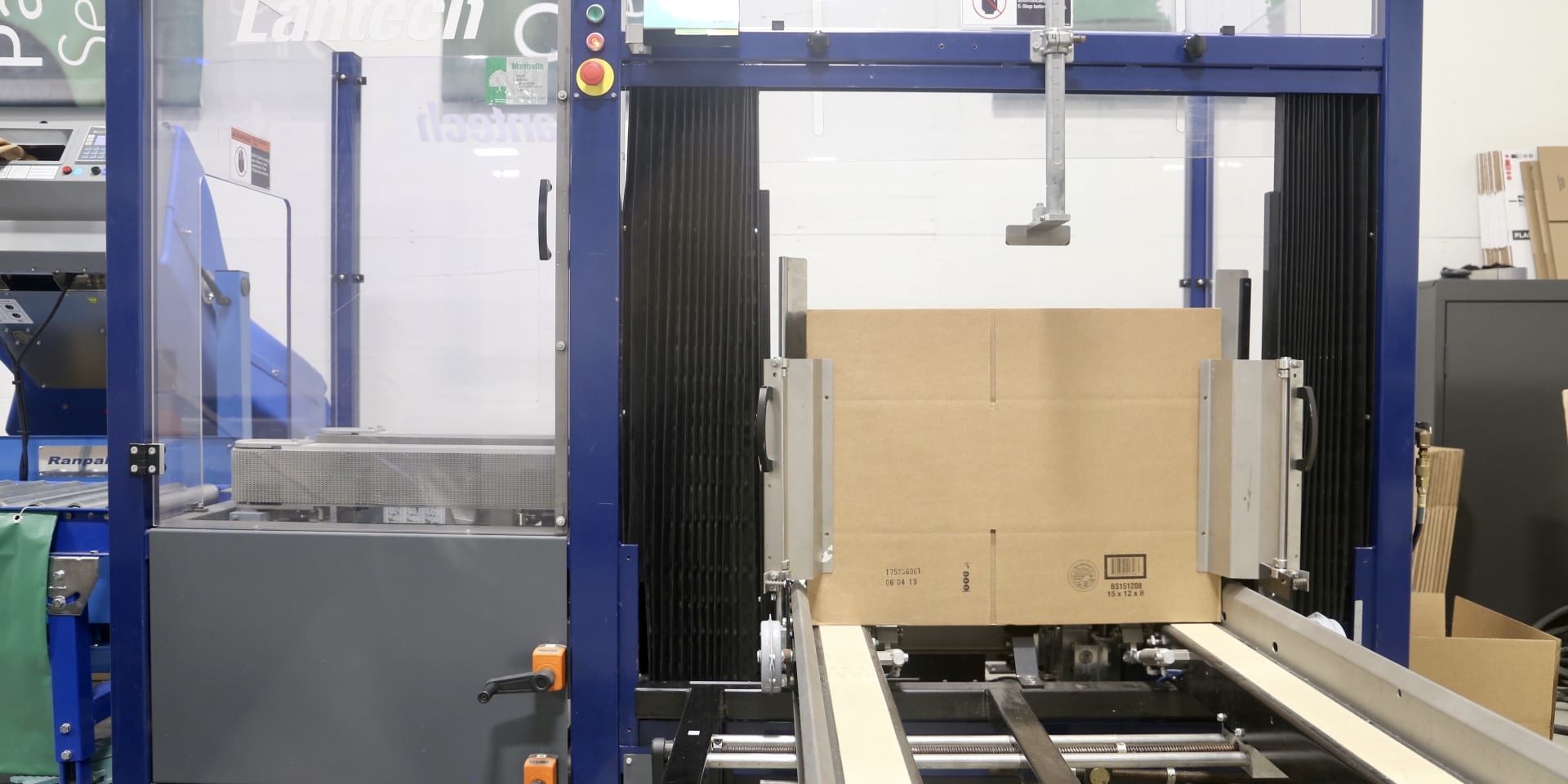
WHAT YOU NEED TO KNOW ABOUT PACKAGING AUTOMATION IN 2021
Packaging automation has skyrocketed in recent years. Market forces have dictated a shift away from manual processes to automation and integrated equipment. This innovation has proven necessary. Reducing the burden of labor costs, improving quality of delivered products, and creating safer warehouses are just a few reasons why automation is only going to continue to grow.
Here’s what our automation experts are predicting for 2021.
What We Learned From 2020
During the beginning of COVID-19, we saw a surge in companies looking to bag custom masks, three-ply masks, and other products. Customers were scrambling to go from zipper bags to bags on a roll. This would enable them to implement an automated bagging machine.
Customers were also looking to move faster. Things were changing very quickly, and our customers relied on us to have fast, nimble solutions. Overall, the focus in 2020 was to take advantage of the global need for items like hand sanitizer, masks, and more.
To take it a step further, companies had to drastically reduce their workforce. At a minimum, they had to move people around so that there would be sufficient space between workers to properly social distance. Most packaging lines would also introduce PPE, which was unheard of in many industries before 2020.
Looking Forward Through 2021
We will likely see an increase in need for applications that require auto-bagging machines, as the need for bagging will continue to grow. Bags are convenient for many types of packaging; they are inexpensive when compared to corrugated options and are efficient for mailing.
Some of the other PPE products that have been steadfast in 2020 will remain, and others will die down. We can confidently predict that operators will remain six feet apart and sanitary precautions (such as hand sanitizer, masks, and hand washing stations) will stay in place.
The need for speed and flexibility will continue to be incredibly important in 2021. We have learned that the future is unpredictable, so we need to have flexible equipment solutions in place to handle a variety of outcomes and remain nimble as things change.
Social Distancing in a Warehouse
As we mentioned, operators will need to stay six feet apart in warehouses for the foreseeable future. As a result, warehouse real estate is of the essence. Creative equipment line layouts will be critical to generate “safe” work spaces and still have the same output.
Equipment can perhaps do tasks that were previously done by operators. Companies thinking about how they can get more output with less worker interaction will turn to automation. With a neutral approach, we help our customers evaluate what they are currently doing by hand and how we can use the right packaging equipment to speed up the process.
E-commerce Will Remain the Norm
Customers and businesses will continue to rely on e-commerce channels for everything from basic necessities to large applications. E-commerce will increase as people find working and buying things from home is safer and easier than heading out to a retail store.
As a result, online ordering platforms will need to continue to make the online shopping experience user friendly. Website marketing is critical to ensure that you are conveying your product benefits accurately since the customer can’t touch the product before the purchase.
This reliance on e-commerce shopping has also increased the demand for fast and free shipping. As a result, distribution centers need to be automated to handle this demand and provide up-to-the-minute packaging solutions.
Companies Of All Sizes Will Automate
The focus on adding equipment, from simple automation to fully automated systems, is at an all time high for all size companies. Low interest rates and more affordable options have removed the traditional cost barrier of entry.
As with other types of technology, automation has also become increasing cost effective through innovations over the years, making it available for companies of all sizes. Automation solutions can range from small pieces of equipment to full factory automation – there is no one size fits all approach.
Turning to the Workforce
The availability of consistent and reliable workers is scarce in many places due to COVID-19. There is a high level of turnover for entry level and temporary employees, creating a constant demand for operator training. Another threat is the potential for rising labor costs due to increase in the minimum wage laws.
A main focus going forward for warehouses is faster production rates that can react to a changing market and deliver more product without adding people or production space.
Safety for workers is also essential. Automation and equipment can eliminate injury related costs, such as medical leave. Overall, workers can change their focus from redundant tasks to more profitable, quality-focused tasks.
Concluding Thoughts
Automation trends that will continue to hold strong include: eliminating unnecessary and non-value added product handling and movement, increasing line speeds and output per employee, providing reliable consistency, improving overall packaging quality, and reducing the cost of rejects, damages, and product returns.
Examples of equipment that our customers benefit from are: case erectors, case sealers, conveyor systems, bagging and shrink systems, product handling and automated case packers, pallet handling and stretch wrapping systems, integrated systems, smart controls, and IoT technologies.
Contact us today to schedule a supply chain audit and find the best equipment for your packaging line. Click here to learn more about the Morrisette approach to packaging automation.
